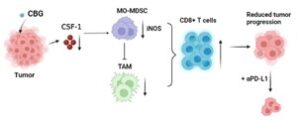Leukemia
Leukemia cancers are hematological malignancies characterized by the uncontrolled production of abnormal white blood cells. Many cases of leukemia harbor mutations in Notch signaling pathways, and NOTCH1 mutations are particularly prevalent in the subtype of T-cell acute lymphoblastic leukemia (T-ALL). This has made the Notch signaling pathway an attractive target for developing new therapeutics for T-ALL, but so far efforts in this area have remained unsuccessful. In our research, we have made significant progress by identifying a specific cannabis extract that induces apoptosis in Notch1-mutated leukemia cells, and isolated the specific metabolites responsible for the effect of the whole plant. Our focus now lies in unraveling the signaling pathway through which these metabolites exert their effect and understanding the potential clinical significance to human T-ALL patients. As dysregulation of Notch1 extends beyond leukemia and is also found in other types of cancers and non-cancerous diseases, we are working to expand our findings as a novel therapeutic strategy for the effective treatment of a variety of malignancies.
Breast cancer
Breast cancer is a diverse group of diseases made of subtypes with distinct behavior and response to therapy. Tumors that express estrogen receptor alpha (ERα) and depend on the hormone estrogen to promote their growth and division constitute ~65% of all cases. They are commonly treated with hormonal therapies that block the action of estrogen or suppress its production. We are currently investigating a newly-identified cannabinoid that affects estrogen signaling through ERα. Ultimately, patients with ER-positive breast cancer could benefit from such a therapy that is tailored to their specific tumor characteristics.
Glioblastoma Multiforme
Glioblastoma Multiforme (GBM) is a highly aggressive and malignant brain tumor. It is the most common and deadliest form of primary brain cancer in adults. Due to its aggressive nature and limited treatment options, GBM poses significant challenges. Moreover, the intricate inter- and intra-tumoral heterogeneity of glioblastoma complicates the development of targeted and effective therapies. Studies demonstrated glioma cells express different levels of cannabinoid receptors compared to normal brain cells, highlighting a potential role for cannabinoids in treating brain tumors. Our study centers on matching cannabinoids to GBM subtypes with the goal of developing therapeutic agents that overcome resistance and improve the standard treatments.
Tumor microenvironment
Immunotherapy boosts a patient’s own immune system so it can attack cancer cells. However, many times treatment results in limited therapeutic outcomes due to the development of a highly immunosuppressive tumor microenvironment (TME). Therefore, in many cases it is insufficient to activate the killer cells without concurrently targeting immunosuppressive cells. Key players in the immunosuppressive TME are regulatory myeloid cells, such as Myeloid-derived suppressor cells (MDSCs). We revealed Cannabigerol (CBG), a non-psychoactive cannabinoid compound, reduces the secretion of the cytokine Colony Stimulating Factor 1 (CSF-1) and thus modulates the recruitment, differentiation, and activation of MDSCs. We were able to show in a preclinical mouse model of melanoma that a combination of CBG with immunotherapy treatment such as αPD-L1 was more effective in reducing tumor progression and enhancing survival than each treatment separately. Our efforts currently lie in expanding our understanding of the underlying mechanism and implementing our findings to other cancers characterized with elevated secretion of CSF-1.

Multidrug resistance pumps
Cancer treatment is evolving rapidly, but despite the development of other treatment modalities, chemotherapy continues to be the widest-used treatment for cancer. Many patients that initially respond to chemotherapy develop what is known as multidrug resistance (MDR), through the overexpression of efflux pumps that actively pump the chemotherapy drugs out of the cells, reducing its effectiveness. Many cancer patients are given chemotherapy concurrently with medical cannabis, for its palliative properties such as pain relief and nausea control. However, reports regarding antitumor properties in addition to the palliative ones have raised the option that specific metabolites from the cannabis plant can reverse the activity of the MDR pumps. We are presently exploring which metabolites, alone or in combination, can block the action of efflux pumps responsible for drug resistance.
